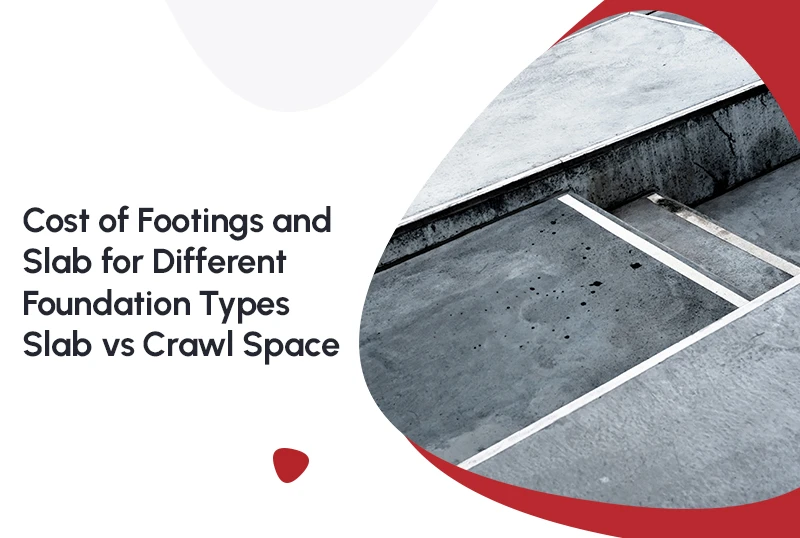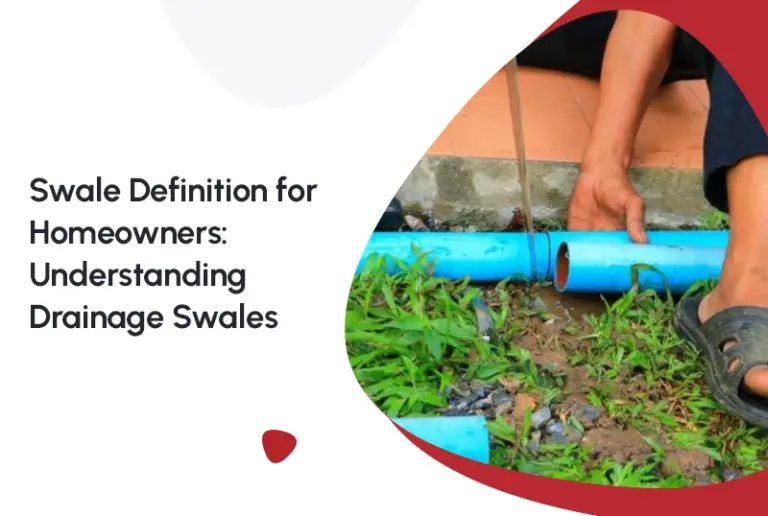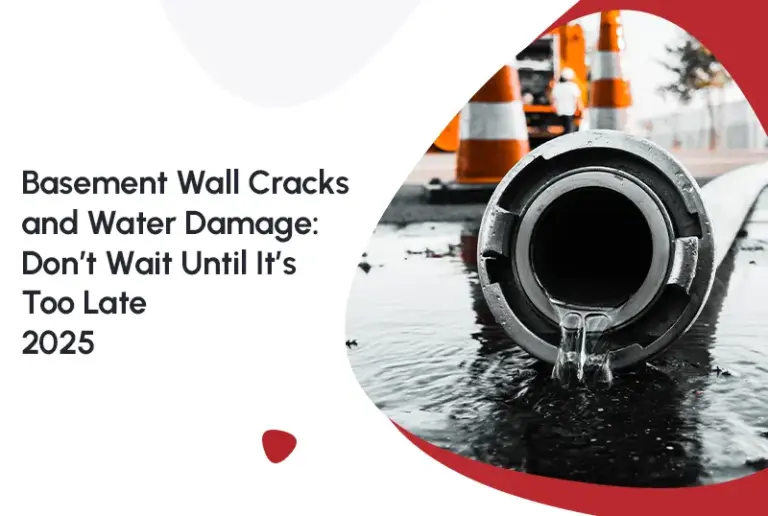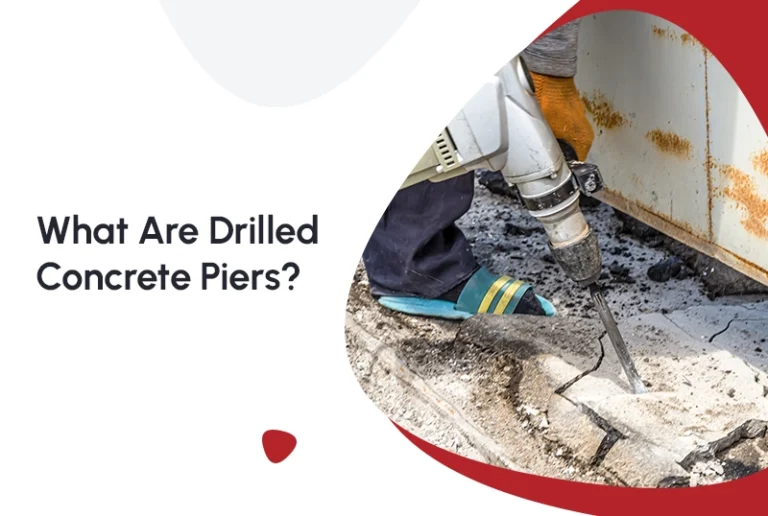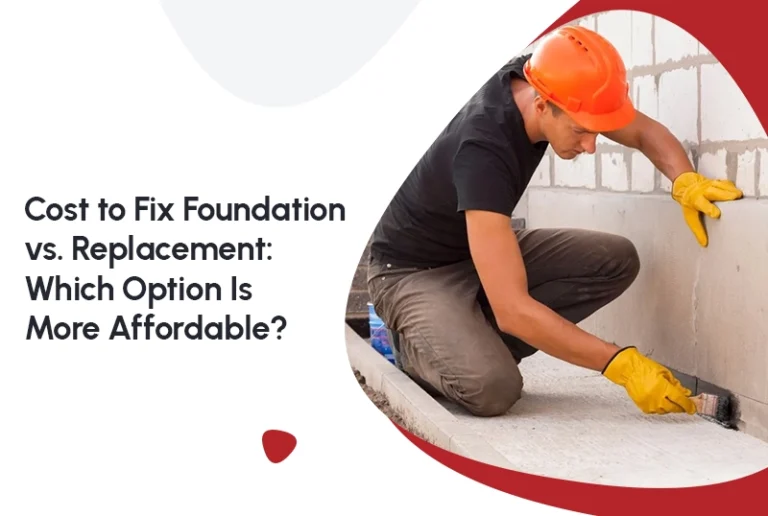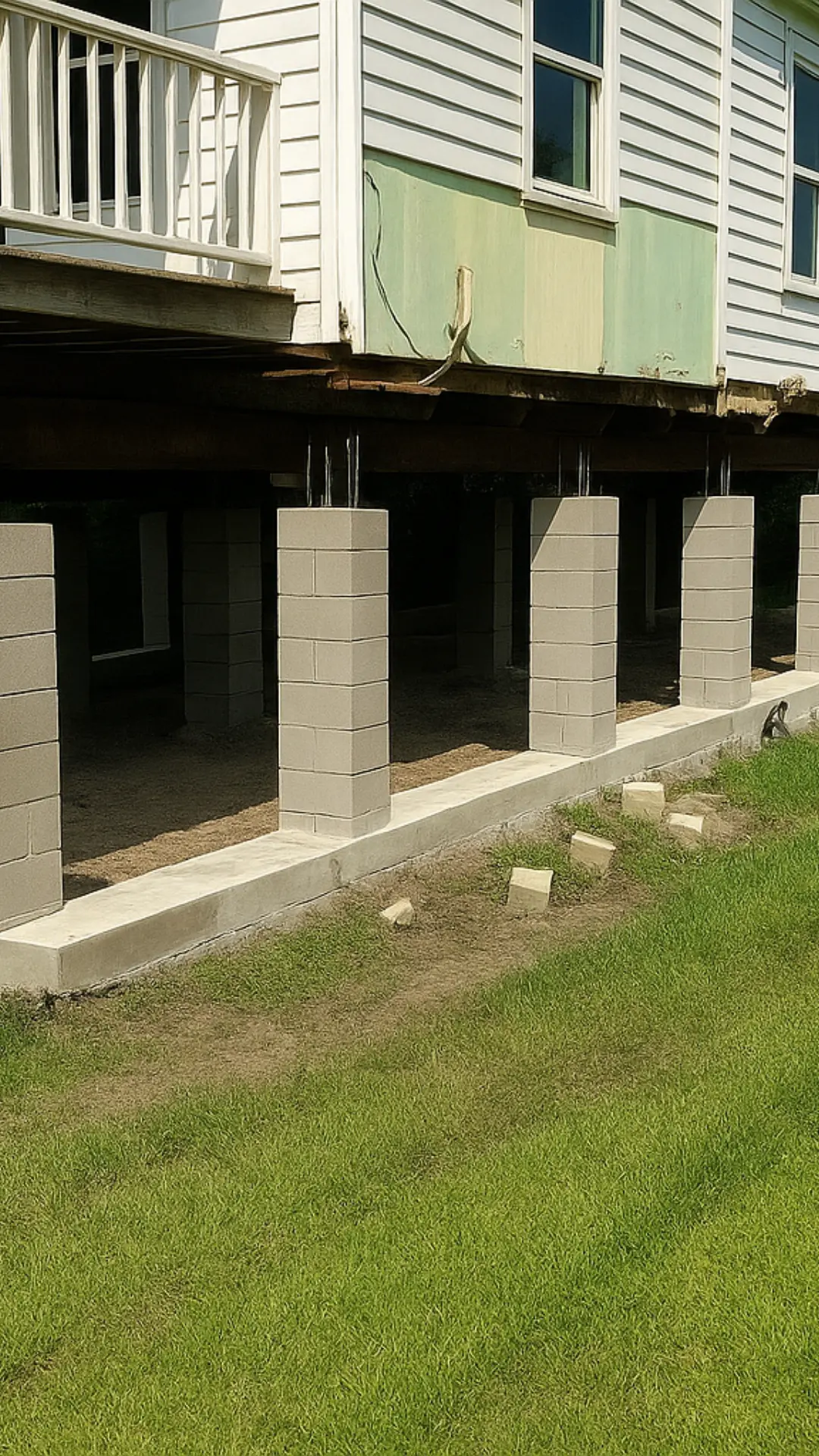When building a home, one of the first and most important decisions is the type of foundation. Choosing the right foundation not only affects the stability and durability of your home but also has a significant impact on your budget. Two of the most common foundation types are slab foundations and crawl space foundations. But how much does it actually cost to lay down footings and slabs for each?
In this guide, we’ll break down the cost of footings and slab, compare slab and crawl space foundations, highlight key factors that influence pricing, and provide actionable tips for homeowners to make informed decisions.
Want to learn more about slab on grade vs crawl space? Click here.
Understanding Footings and Slab
Before diving into costs, it’s important to understand what footings and slabs are:
Footings:
These are the base of your foundation, usually made of poured concrete. Footings spread the load of your home evenly across the soil, preventing settling or cracking. They are crucial for both slab and crawl space foundations.
Slabs:
A concrete slab is a flat layer of concrete poured directly on the ground. In slab foundations, this slab serves as both the floor and the structural base. For crawl spaces, the slab might be thinner, and the main weight is carried by footings and foundation walls.
The cost of footings and slab can vary significantly depending on the foundation type, project size, soil conditions, and local labor rates.
Slab Foundation vs Crawl Space Foundation: Key Differences
| Feature | Slab Foundation | Crawl Space Foundation |
|---|---|---|
| Height | Poured directly on the ground | Elevated 18–36 inches |
| Construction | Single flat slab | Footings, walls, and crawl space floor |
| Access to Utilities | Limited | Easy to access plumbing & wiring |
| Moisture Issues | Moderate if soil drains well | Higher risk of water in crawl space |
| Maintenance | Low | Moderate, requires inspection & moisture control |
| Cost | Lower upfront | Higher due to walls, venting, and waterproofing |
Average Cost of Footings and Slab for Slab Foundations
For a standard slab foundation, the cost of footings and slab typically ranges between $4–$8 per square foot, depending on factors like:
- Slab Thickness: Thicker slabs require more concrete and reinforcement.
- Reinforcement Type: Adding rebar or wire mesh increases durability but adds cost.
- Excavation Needs: Hard or uneven soil may require extra excavation work.
- Local Labor Costs: Labor rates vary by region, influencing overall expenses.
Example: A 1,500 sq. ft. home with a slab foundation may cost $6,000–$12,000 for footings and slab alone.
Pros of Slab Foundations:
- Quick construction
- Lower cost and low maintenance
- Excellent for stable soil conditions
Cons:
- Limited access to plumbing or electrical lines
- Minor settling can require concrete levelling in the future
Average Cost of Footings and Slab for Crawl Space Foundations
Crawl space foundations are more complex and involve more materials:
- Footings: Similar to slab foundations but often deeper to support walls.
- Foundation Walls: Concrete blocks or poured concrete walls support the home.
- Crawl Space Floor: May include a thin concrete layer for moisture control.
Because of these additional components, the cost of footings and slab for crawl space foundations usually ranges from $7–$12 per square foot.
Example: A 1,500 sq. ft. home with a crawl space foundation may cost $10,500–$18,000 for footings and slab.
Pros of Crawl Space Foundations:
- Easy access to plumbing, wiring, and HVAC systems
- Elevated structure helps prevent minor flooding
- Flexible insulation options
Cons:
- Higher initial cost
- Risk of water in crawl space causing moisture or mold issues
- Requires ongoing maintenance and inspections
Factors Influencing the Cost of Footings and Slab
Whether you choose a slab or crawl space, several key factors affect pricing:
1. Soil Type
Clay, sandy, or rocky soils may require additional excavation, grading, or stabilization, increasing costs.
2. Climate
Areas prone to heavy rain or frost may require thicker slabs, deeper footings, or waterproofing measures.
3. Project Size
Larger homes require more concrete and labor, naturally increasing costs.
4. Reinforcement
Adding rebar, wire mesh, or post-tension cables strengthens the foundation but adds to the budget.
5. Local Labor Rates
Labor costs vary across regions. Urban areas usually have higher rates compared to rural locations.
How to Save on Footings and Slab Costs
- Plan Ahead: Avoid last-minute changes that require rework.
- Compare Quotes: Get estimates from multiple contractors.
- Optimize Design: Consider slab thickness and reinforcement carefully.
- Prevent Water Damage: Proper drainage reduces future repairs like concrete slab foundation repair.
- DIY Minor Tasks: Tasks like site prep or forming (if allowed) can save money.
Fun Fact / Statistic
Did you know? According to the National Association of Home Builders, 72.4% of new single-family homes started in 2023 were built on slab foundations, up from 45.8% in 2000.
This surge shows how popular slab foundations are for modern builds—mainly due to lower cost of footings and slab and easier maintenance compared to crawl spaces.
Final Thoughts
The cost of footings and slab depends on your foundation choice, local conditions, and project size. Slab foundations are cost-effective, low-maintenance, and popular for modern homes, while crawl space foundations offer utility access and insulation benefits at a higher price.
To protect your investment and avoid future problems like concrete slab foundation repair, FNF Foundation provides expert guidance, construction, and maintenance for both foundation types. Contact us today to ensure your home is built on a strong, durable foundation that lasts for decades.
FAQs About Footings and Slab Costs
Q1: What is included in the cost of footings and slab?
A: Typically includes excavation, concrete, reinforcement, formwork, and labor. Additional costs may arise for grading, waterproofing, or soil stabilization.
Q2: Is a slab foundation cheaper than a crawl space?
A: Yes, slab foundations generally cost 20–40% less due to simpler construction.
Q3: Can the cost of footings and slab vary by region?
A: Absolutely. Soil type, labor rates, and local building codes can affect prices.
Q4: How long does it take to pour and cure a slab or crawl space foundation?
A: Pouring may take 1–3 days depending on size; curing takes roughly 28 days to achieve full strength.
Q5: Can poor curing lead to future problems?
A: Yes. Improper curing can cause cracks, concrete spalling, or uneven settling requiring concrete levelling.
